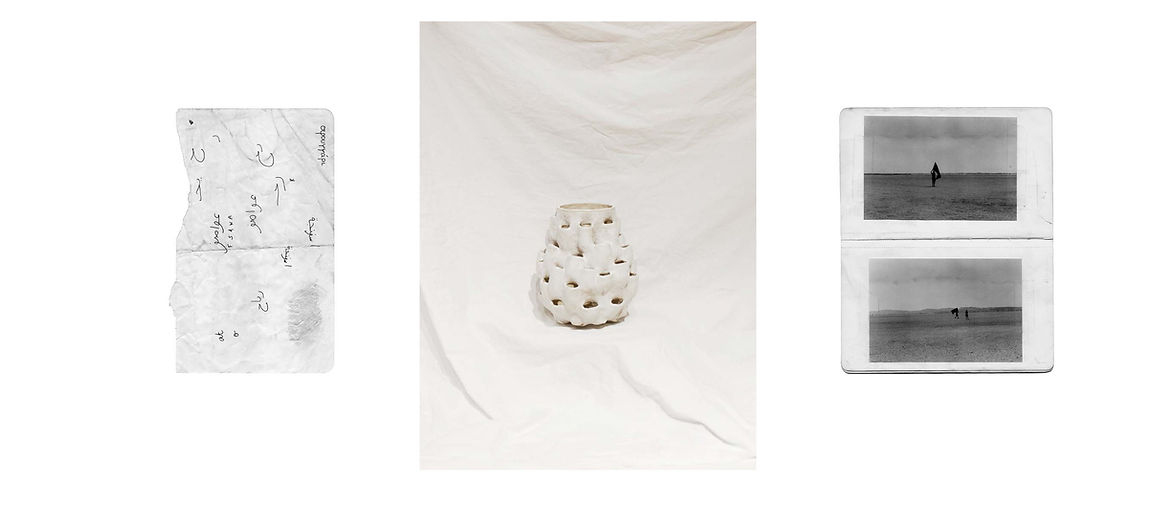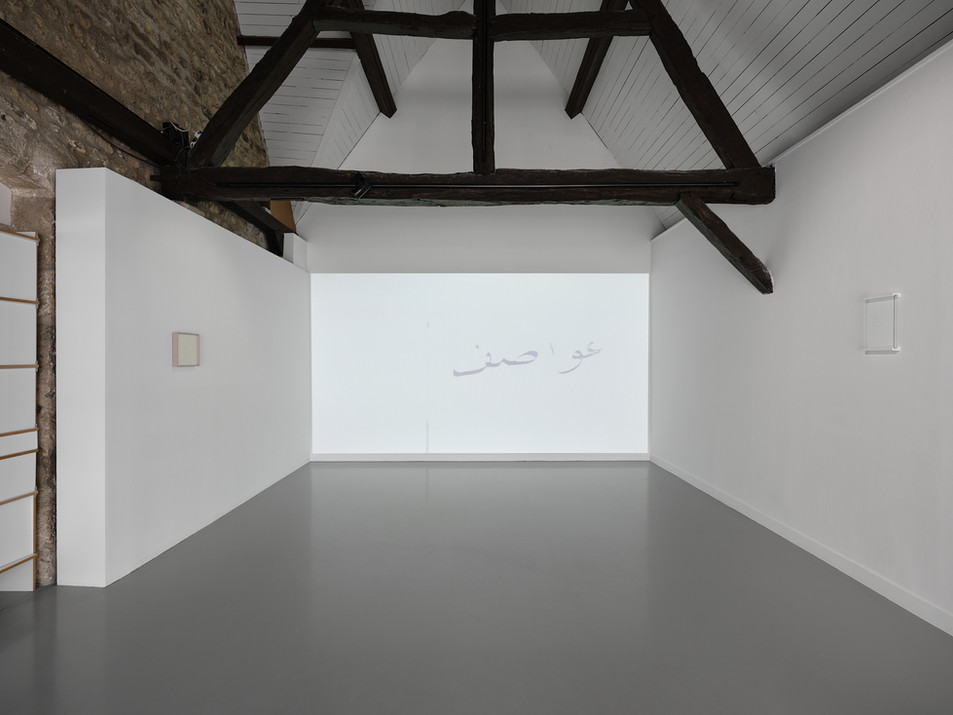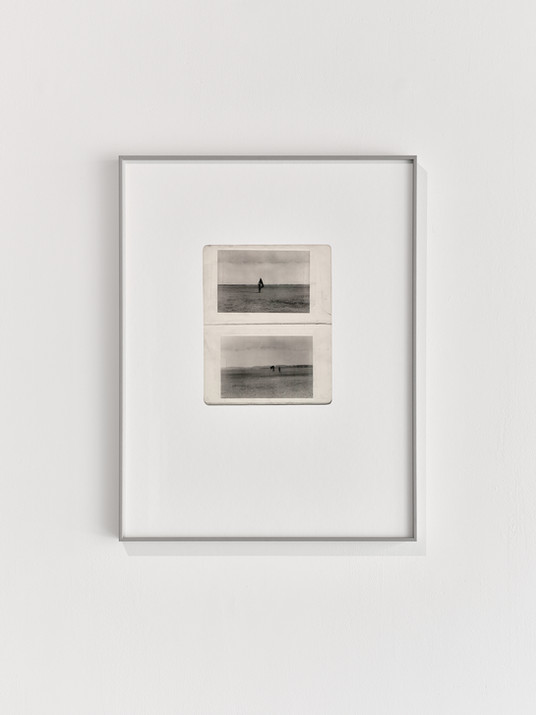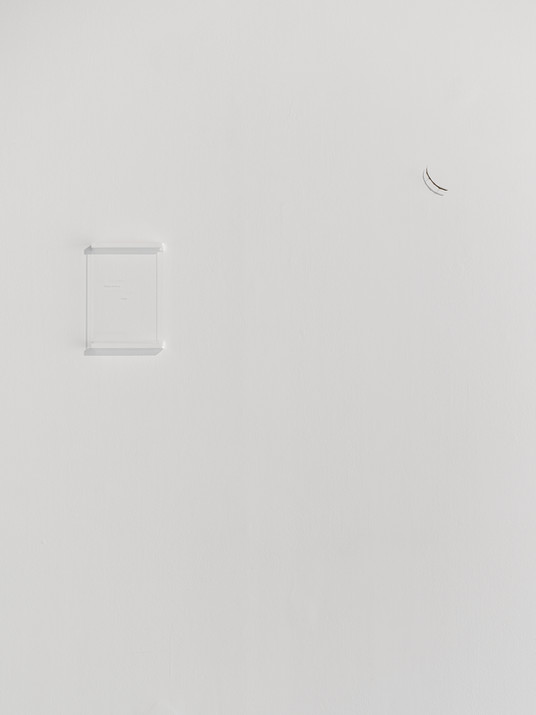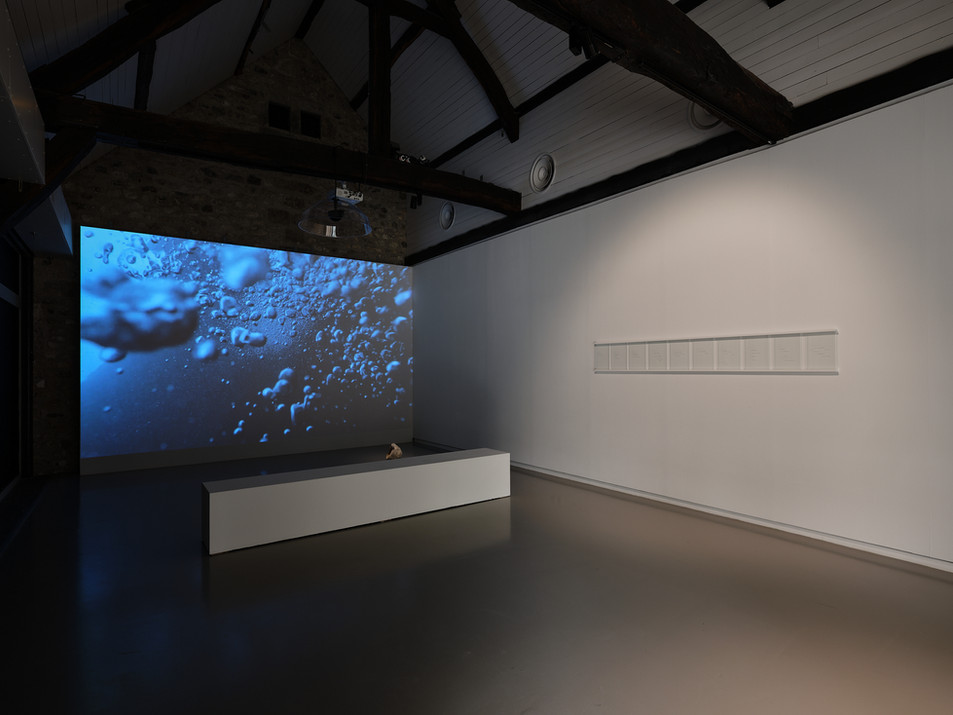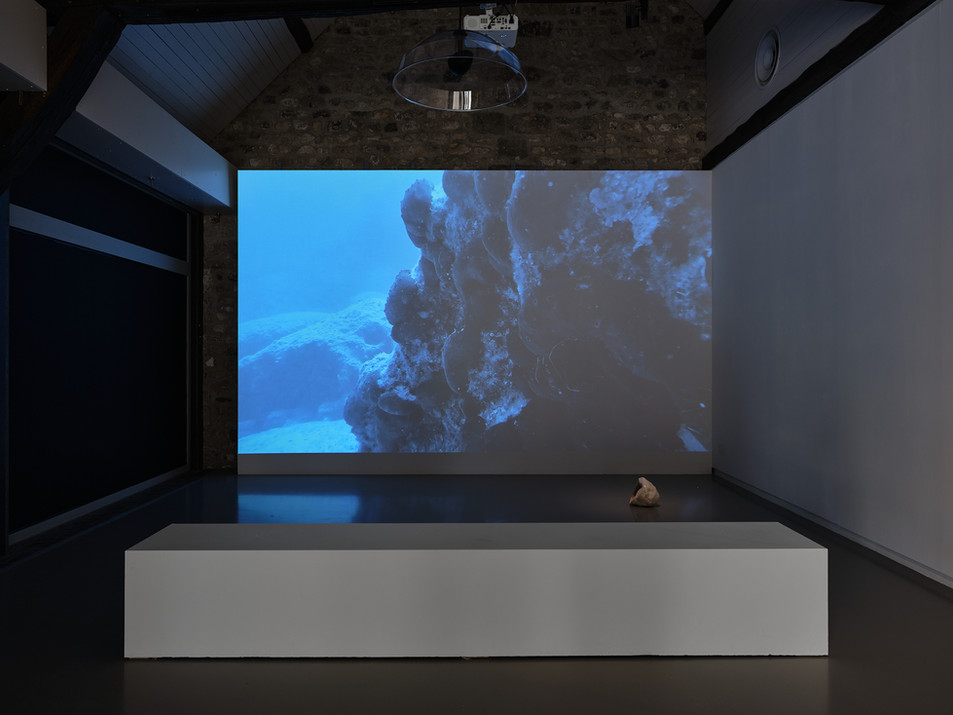
Andar semi semi
[ Aller ensemble ]
13.09 - 20.12.2025
Maison des arts Agnès-Varda
Solo exhibition of Camille Pradon
Proposed by Marie-Laure Lapeyrère
Curated by Pierre Duval
Opening on September 13
from 5pm
With the support of the Département de la Seine-Maritime, the Institut français in Paris & Région Normandie, the Adagp, the City of Rouen, the Institut français of Greece, and the Auberge de France in Rhodes, as well as the curatorial programme Office of Hydrocommons led by Eleni Riga and supported by the ATOPOS cvc Foundation (Athens).
Camille Pradon warmly thanks her partners for their invaluable support: Eleni Riga (Office of Hydrocommons × ATOPOS cvc), Nour Amrani and Katherine Li Johnson (Tunis to This), Mr Alexander Pelecanos and Mrs Katerina Klonaris, Mrs Anouk Rigeade and the team at the Institut français of Greece, the Honorary Consul of France in Rhodes, the Marine Station of Endoume – Mediterranean Institute of Biodiversity and Ecology in Marseille, the Hellenic Centre for Marine Research in Heraklion, as well as all those encountered between shores: In Kerkennah, Sfax, Mahdia, Tunis, Kalymnos, Symi, Heraklion, Athens, Rhodes, Rouen, Paris, Marseille.
She also expresses her gratitude to the City of Grand Quevilly, the Maison des arts Agnès-Varda's Team, Marie-Laure Lapeyrère for her invitation, and Pierre Duval, curator of the exhibition.
"Andar semi semi"
How To Convey The Need To Walk The Path Together.
Camille Pradon’s exhibition at the Maison des arts is part of a broader research where the themes of language and movement intertwine. The title itself encapsulates the connexion of these two central concerns within her practice. “Andar semi semi” means “to walk together, hand in hand.” It is written in a language that has now almost disappeared — the lingua franca. This “langue franche” was a sabir (from the Spanish saber, “to know”) used as a vehicular language around the Mediterranean basin from the Middle Ages until the late nineteenth century.
It was formed by gathering words from the different languages spoken by the populations surrounding the Mediterranean, as a means to create a tool for communication among speakers of diverse mother tongues. Born from a desire to cross borders and transcend territorial separations, it is a language of mondiality (1), to borrow Édouard Glissant’s term — a language that activates the idea of the archipelagic nature of Mediterranean cultures, whose primary concern was to meet, exchange, trade, circulate, and move.
Both the lingua franca and the title “Andar semi semi,” meaning “to walk together,” express this central concern for displacement — understood both geographically and intimately. A movement that can never truly be experienced alone, whether in its causes or its forms. Why do we move? With whom? Towards where? And how?
Pradon’s approach to language deeply echoes this question and the fragilities it entails. Languages act as essential tools of openness, perfect vehicles to cross borders and re-map territories. The artist has noted that her curiosity — which led her to learn Italian and take an interest in languages such as Arabic, Japanese, and Greek, depending on the directions of her research — is a way of approaching, in all their complexity, the various layers of knowledge, to better encounter others.
This way of engaging with movement, both literal and metaphorical, reveals the artist’s intent to decentre the gaze and to rethink the issues of borders and exchanges between beings through a lens akin to Glissant’s Tout-Monde — “a world in which human beings, animals and landscapes, cultures and spiritualities are mutually connected. A world where the geography of ideas, desires and creative energies escapes territory and continental systems, entering instead into relations and archipelagos. A world where other ways of living, creating and meeting become possible.” (2)
Her works and research can thus be seen as tools for learning to see and feel differently. They undeniably express an openness to the world, to cultures, and to the differences that shape us — differences whose entangled richness and dialogue we too often forget. It is hoped that those who come to experience this exhibition will, in their own way, encounter this sensibility.
Marie-Laure Lapeyrère
1. “If globalisation is a state of fact in the evolution of economy and History, proceeding through levelling down, mondiality, on the other hand, is this state of encounter among cultures lived in respect for Diversity. It thus refers to an intellectual, spiritual and sensory enrichment rather than an impoverishment caused by uniformity, which we unfortunately know all too well.” — www.edouardglissant.fr/mondialite.html
2. Aliocha Wald Lasowski, “Le Tout-Monde d’Édouard Glissant : une chaosthétique romanesque,” in Refaire le monde. Revue de Sciences Humaines, no. 347, 2022
To Hold Witness
Since the beginning of time, stories have been written through the memories of those who lived them. With Andar semi semi [Aller ensemble], Camille Pradon ventures into the depths of forgotten narratives, where muted voices find renewed resonance. By weaving connections within the interstices, she traverses history — and histories — to open new paths of interpretation. This unruly crossing unsettles familiar landmarks, revealing suspended gestures once frozen in stillness. It is an exploration of the intangible, made possible through the resurfacing of buried images and words in search of attention — patiently assembled by the artist.
Through subtle mechanisms that shift our interpretative frameworks, Pradon reveals a hidden restlessness inscribed in every fold of space. Amid this quiet agitation, the sea silently archives life trajectories, rituals, and gestures — shared legacies written in silence, sometimes buried in the depths. The artist navigates this expanse by proposing a history of circulations, where each detail carries traces of memory. Her approach to language through acts of capture — at the crossroads of engraving and erasure — evokes a discreet and fragile vocabulary, imbued with the elemental power of matter.
To grasp the sensitive essence of time, Camille Pradon carefully deciphers what imprints itself on the surface of existence. By exploring the porous relations between surface and depth, she seeks to uncover the very nature of the visible. Testimony, in this light, is not proof nor fixed document, but a mutable substance — crossed by absences and emergences. Rather than reconstructing a narrative, her work reveals its gaps, its silences, the shadow zones that resist interpretation and outline a shared memory. The ellipse, a recurrent motif in her practice, acts as a narrative tool: it creates suspensions and points of shift from which another, fragmented and decentered voice may emerge.
These crossings — geographical, affective, or temporal — transform our relationship to testimony, rendering it porous, vibrant, at times unsteady. What matters here is not the restitution of a story, but the attempt to capture its diffuse resonances, its subterranean persistences.
With an attentive gaze, Camille Pradon shapes forms that slip between lines. She reads within margins, listens within silences. This resonance between spaces and times generates a series of shifting testimonies, built in the intervals and reassembled through subtle gestures. A trajectory unfolds across the images and artefacts presented in the exhibition, each acting as a vessel for forgotten voices — an agora for those unspeakable things resurfacing to invite us to listen, to connect, and to share.
Pierre Duval, curator
Exhibition visual: La traversée, 2025 © Camille Pradon, Adagp
Below: La langue dans la poche (2025), Melodos (2024–2025), Silence (2025)
